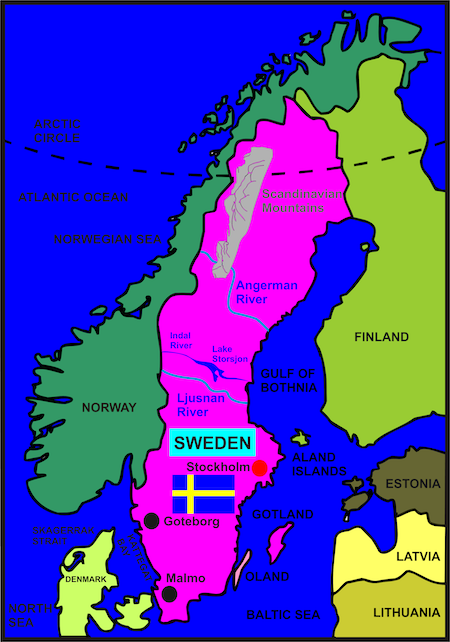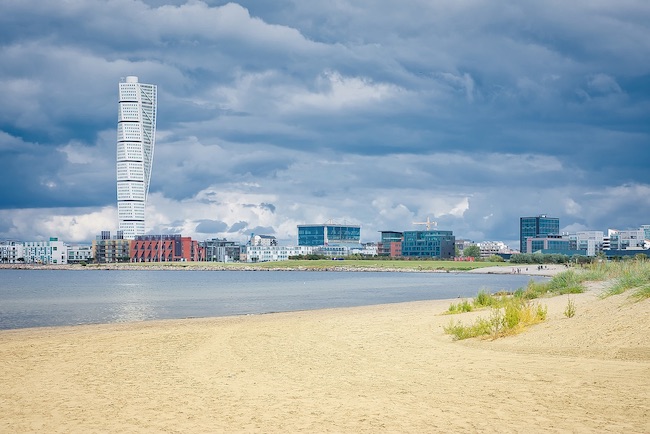Click on the map below to learn more
 |
Stockholm, SwedenStockholm, the capital of Sweden, is a vibrant and beautiful city that offers visitors a unique blend of modernity and history. The city is situated on 14 islands in the archipelago of the Baltic Sea and is often referred to as the "Venice of the North" because of its many waterways. One of the city's most iconic landmarks is the Stockholm Palace, which is the official residence of the Swedish royal family. The palace was built in the 18th century and is an impressive example of Baroque architecture. Visitors can take a guided tour of the palace and explore its many ornate rooms and halls. Another popular attraction in Stockholm is the Vasa Museum, which houses the Vasa ship, a 17th-century warship that sank on its maiden voyage in 1628. The ship was recovered from the depths of the Baltic Sea in the 1960s and has been meticulously restored. Visitors can explore the ship and learn about its fascinating history. For those interested in art and culture, Stockholm has a wealth of museums and galleries to explore. The National Museum of Fine Arts is home to an impressive collection of Swedish and European art, while the Moderna Museet showcases contemporary art from around the world. The city is also known for its many theaters and music venues, and hosts a variety of cultural events throughout the year. Stockholm is also a food lover's paradise, with a wide range of restaurants serving everything from traditional Swedish cuisine to international fare. The city's famous food halls, such as the Östermalm Food Hall and the Hötorgshallen, are a must-visit for anyone looking to sample local delicacies. One of the best ways to explore Stockholm is on foot, and the city's many parks and green spaces provide ample opportunities for leisurely strolls. The Royal National City Park is a popular destination for both locals and visitors, with its many walking trails, picnic areas, and stunning views of the city. |
|
|
|
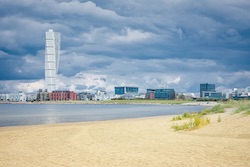 |
Malmo, SwedenMalmö is a city located in the south of Sweden, situated on the coast of the Öresund Strait, across from Copenhagen, Denmark. With a population of approximately 340,000, it is the third-largest city in Sweden and one of the most diverse cities in the country. Malmö has a rich cultural history, and today it is a modern and vibrant city that attracts visitors from around the world. Malmö has a rich and varied history, with evidence of human settlement in the area dating back to the Stone Age. Over the centuries, the city has been ruled by various powers, including Denmark, Sweden, and Germany. During the 19th century, Malmö grew into an important center of industry and commerce, and today it is one of the most prosperous cities in Sweden. Malmö is known for its diverse and vibrant cultural scene, with a range of events and activities taking place throughout the year. The city is home to several museums and art galleries, including the Malmö Konstmuseum, which houses an extensive collection of modern and contemporary art. The city is also known for its music scene, with several music festivals taking place throughout the year. The largest of these is the Malmö Festival, which takes place in August and features a range of international and local artists. Other festivals include the Malmö Jazz Festival and the Malmö Film Festival Malmö has several attractions that are popular with tourists. One of the most famous of these is the Turning Torso, a skyscraper that is the tallest building in Sweden. The building is located in the Western Harbour area of Malmö, which has been transformed from an industrial port into a modern and sustainable residential area. The city is also known for its parks and green spaces, including the Pildammsparken, a beautiful park that is home to several lakes and gardens. Other popular parks include the Kungsparken and the Slottsparken, both of which offer stunning views of Malmö Castle. |
|
|
|
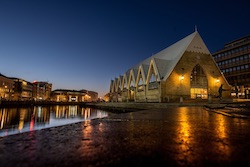 |
Goteborg (Gothenburg), SwedenGothenburg is the second-largest city in Sweden, located on the west coast and situated at the mouth of the Göta älv river. The city has a rich history, having been founded in the 17th century, and is known for its maritime heritage, vibrant cultural scene, and beautiful parks and gardens. One of Gothenburg's most iconic landmarks is the Göteborgs Konstmuseum, which is home to an impressive collection of Swedish and international art. The museum's collection includes works by artists such as Rembrandt, Monet, and Picasso, as well as many contemporary artists. The city's many parks and gardens are also a major draw for visitors. The Göteborg Botanical Garden is one of the largest in Europe, and is home to a wide range of plant species from around the world. The Slottsskogen Park is another popular destination, with its many walking trails, picnic areas, and stunning views of the city. For those interested in history, Gothenburg has a number of museums and historical sites to explore. The Göteborgs Stadsmuseum is dedicated to the history of the city, while the Maritiman Museum showcases the city's maritime heritage. The Göteborgs Konstmuseum is also home to a number of historical artifacts and exhibits. Foodies will find plenty to love in Gothenburg, with a wide range of restaurants and cafes serving everything from traditional Swedish cuisine to international fare. The city is particularly known for its seafood, and the Feskekôrka fish market is a must-visit for anyone looking to sample fresh seafood. Gothenburg is also home to a vibrant music scene, with many music venues and festivals throughout the year. The Göteborgsoperan is one of the most prestigious opera houses in Europe, while the Way Out West music festival attracts some of the biggest names in music from around the world. |
|
|
|
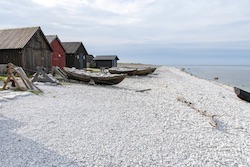 |
GotlandGotland is a picturesque Swedish island located in the Baltic Sea. The island is the largest in Sweden, with an area of over 3,000 square kilometers, and boasts a rich history, stunning landscapes, and a unique culture. The island's history dates back to the Stone Age, and evidence of its past can still be seen today in the form of ancient rune stones, medieval churches, and the impressive ruins of the Visby City Wall. Visby, the island's main town, is a UNESCO World Heritage site and is known for its well-preserved medieval architecture. In addition to its historical significance, Gotland is also known for its stunning natural beauty. The island is home to a diverse range of landscapes, from rugged cliffs and rolling hills to serene beaches and lush forests. Gotland's coastline stretches for over 800 kilometers, making it an ideal destination for swimming, boating, and other water-based activities. The island's unique culture is also a major draw for visitors. Gotland has its own distinct dialect, which can be difficult for non-natives to understand, and a vibrant arts scene. The island is home to many talented artists and musicians, and hosts a variety of cultural events throughout the year, including the Gotland Chamber Music Festival and the Gotland Art Week. One of the island's most famous traditions is the annual Almedalen Week, a week-long political event that attracts politicians, journalists, and business leaders from across Sweden. The event takes place in Visby and is an opportunity for people to discuss and debate important issues facing the country. Another popular attraction on Gotland is the Lummelunda Cave, a spectacular underground cave system that was discovered in the 17th century. The cave is home to an incredible array of stalactites and stalagmites, as well as a colony of bats. Visitors to Gotland can also enjoy a wide range of outdoor activities, including hiking, cycling, and horseback riding. The island's many nature reserves provide ample opportunities for wildlife viewing and birdwatching. |
|
|
|
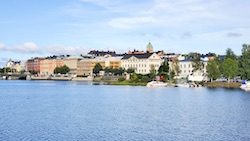 |
Angerman RiverThe Angerman River, also known as the Ångermanälven, is one of Sweden's most significant waterways. The river is located in the northern region of the country and flows from the Scandinavian Mountains, through central Sweden, and into the Gulf of Bothnia. The Angerman River is approximately 460 kilometers long and is the fourth-longest river in Sweden. The river's source is located in the mountains near the Swedish-Norwegian border and flows through the provinces of Jämtland, Ångermanland, and Västerbotten before emptying into the Gulf of Bothnia. Along the way, the river passes through many small towns and cities, including Sollefteå, Örnsköldsvik, and Kramfors. The Angerman River is an important natural resource for the region. The river's water is used for hydroelectric power generation, and there are several hydroelectric power stations located along the river's length. The river is also an essential source of water for agriculture and forestry, which are critical industries in the area. The river is known for its excellent fishing opportunities. The river is home to several species of fish, including salmon, trout, grayling, and pike. Anglers from around the world come to the Angerman River to try their hand at catching these fish, and many fishing camps and lodges are located along the river's banks. The Angerman River is also a popular destination for canoeing and kayaking. The river offers many challenging rapids and serene stretches of calm water, making it an excellent location for both experienced and novice paddlers. The river's banks are home to several campgrounds, making it easy for visitors to explore the area by boat or on foot.
|
|
|
|
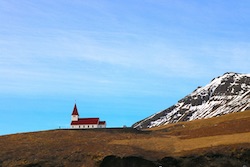 |
The Scandinavian MountainsThe Scandinavian Mountains, also known as the Scandes or the Scandinavian Alps, are a mountain range that runs through Norway, Sweden, and parts of Finland. The mountains are one of the largest mountain ranges in Europe, stretching over 1,700 kilometers from the Arctic Circle in the north to the southern coast of Norway. The Scandinavian Mountains are made up of several different mountain ranges, including the Jotunheimen range in Norway, which is home to the highest mountain in Scandinavia, Galdhøpiggen, standing at an impressive 2,469 meters. The Scandinavian Mountains were formed over millions of years through the collision of tectonic plates. The range was first formed around 300 million years ago during the late Paleozoic era and has been shaped and modified by glacial activity and erosion over time. The Scandinavian Mountains have a subarctic climate, with long, cold winters and short, mild summers. The mountains receive heavy snowfall during the winter months, making them a popular destination for winter sports enthusiasts. The snow often remains on the ground until late spring, creating excellent conditions for skiing, snowboarding, and other winter activities. The Scandinavian Mountains are home to a wide range of plant and animal species. The mountains are covered in dense forests of birch and pine trees, with higher elevations featuring alpine vegetation, including mosses, lichens, and small flowering plants. The range is also home to several species of large mammals, including moose, reindeer, and brown bears. Wolves and lynx also inhabit the mountains but are more elusive and harder to spot. The Scandinavian Mountains are a popular tourist destination, attracting visitors from around the world who come to enjoy the stunning scenery and outdoor activities. During the winter months, the mountains are a popular destination for skiing, snowboarding, and other winter sports. In the summer months, visitors can enjoy hiking, camping, and mountain biking, with several national parks and nature reserves located in the area. One of the most popular of these is the Jotunheimen National Park in Norway, which offers stunning views of the mountains and several hiking trails of varying difficulty levels. |
|
|
|
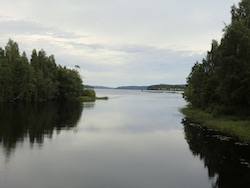 |
The Ljusnan Riverhe Ljusnan River is a beautiful and vital waterway that runs through central Sweden. It stretches over 430 km, beginning in the mountains of the Härjedalen region and flowing into the Gulf of Bothnia. The river is a popular destination for tourists, anglers, and locals alike, with its crystal-clear waters, rich biodiversity, and stunning natural scenery. One of the most notable features of the Ljusnan River is its clarity. The river is fed by melting snow from the mountains, which helps to filter out impurities and pollutants. This gives the water a remarkable transparency, allowing visitors to see right to the bottom of the riverbed. In fact, the Ljusnan River is so clear that it has been used to shoot underwater footage for movies and television shows. The river is also home to a diverse range of plant and animal species. The river banks are lined with lush vegetation, including willow trees, birches, and wildflowers. The water is home to several species of fish, including trout, grayling, and pike, making it a popular spot for anglers. The river is also a habitat for beavers, otters, and several species of birds, including kingfishers and ospreys. For those looking to explore the Ljusnan River, there are several activities to enjoy. Anglers can cast a line and try their luck at catching one of the river's many fish species. Kayakers and canoeists can paddle along the river, taking in the scenery and spotting wildlife along the way. Hikers can explore the surrounding forests and hills, which are home to several marked trails and hiking routes. One of the most scenic areas along the Ljusnan River is the town of Järvsö. This charming town is situated on the river's banks and is surrounded by picturesque countryside. Visitors can explore the town's historic buildings, which date back to the 17th century, or take a ride on the Järvzoo Express, a train that runs along the river's edge and offers stunning views of the surrounding landscape. |
Stockholm |
|
| Population: | 10,400,000 (2021) |
| Area: | 173,860 sq. miles |
| Capital City: | Stockholm |
| Largest City: | Stockholm |
| Currency: | Swedish Krona |
| Official Language: | Swedish |
| GDP (Gross Domestic Product) | $538.5 Billion (22nd) |
| Back to Map | |
Malmo, Sweden
|
|
|
|
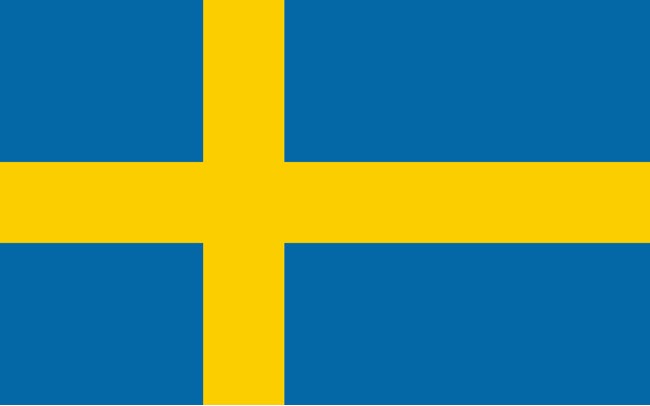 |
|
The Swedish flag, or the "Sveriges flagga," is a symbol of the Nordic country's rich history and culture. The flag features a bright blue background with a yellow cross that divides the flag into four equal parts. The origins of the Swedish flag can be traced back to the 16th century. In 1563, King John III of Sweden introduced a new flag, which was a combination of the blue and yellow colors that were already used by Sweden's coat of arms. However, it wasn't until 1906 that the Swedish parliament officially declared this flag as the national flag of Sweden. The blue color of the Swedish flag represents the country's many lakes and its sky, while the yellow color symbolizes the country's fields of wheat and its abundant sunshine. The cross is believed to represent Christianity, which has played an important role in Swedish history since the 11th century.
Back to Map |
|
